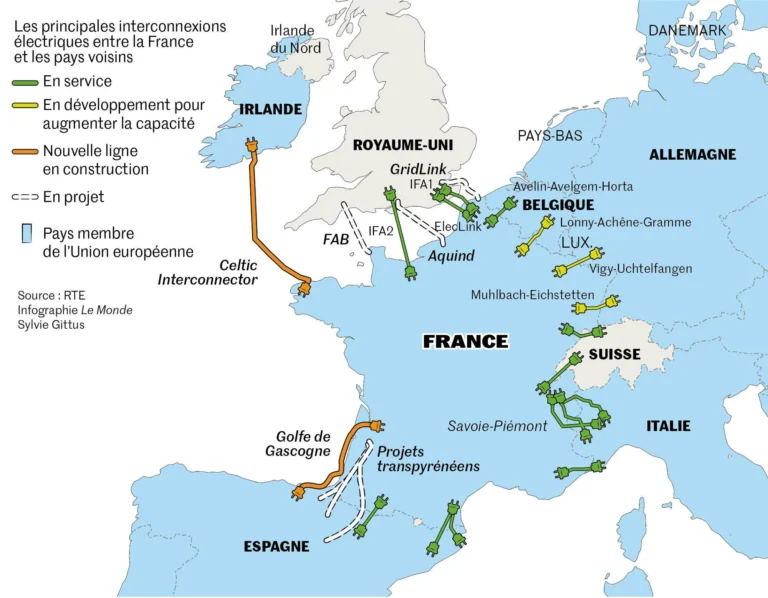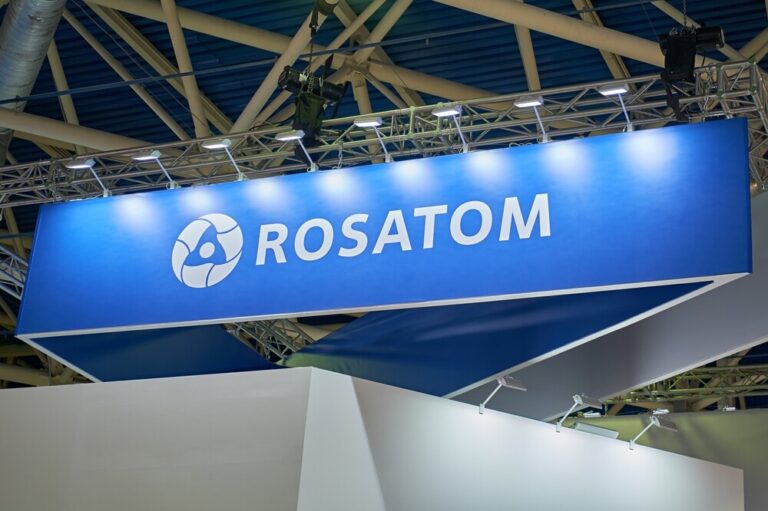
Image source: https://www.sciencedirect.com/science/article/pii/S245230381730095X
VVER-1200 nuclear reactors are the latest generation of Russian nuclear power technology, offering improved safety, efficiency and cost-effectiveness. This advanced technology has become one of the most popular reactor designs worldwide, with applications in many countries.
What is VVER-1200?
The VVER-1200 (Водо-водяной энергетический реактор – Water-Water Energetic Reactor) is a third-generation+ pressurized water reactor (PWR) designed by the Russian company Rosatom. With an electrical output of 1200 MW, it represents the evolution of the successful VVER series that has been in use for decades.
The name VVER comes from the Russian and indicates the use of water as both a coolant and a neutron moderator. This design ensures high efficiency and reliability in operation.
Technical Specifications
The VVER-1200 has several advanced technical features that classify it among modern reactors:
Thermal Power: 3200 MW Electrical Power: 1200 MW Performance: Approximately 37.5% Lifetime: 60 years with possibility of extension to 80 years Loading Factor: Above 90%
The reactor cooling system consists of four independent loops, each equipped with a main coolant pump and a steam generator. This arrangement ensures high reliability and the ability to continue operation even in the event of a loop failure.
Security Systems
Safety is at the core of the VVER-1200 design. The reactor incorporates multiple levels of protection:
Passive Security Systems: They operate automatically without human intervention or external energy, based on natural laws such as gravity and natural circulation.
Double Protection Cover: The reactor building is surrounded by two independent protective covers, capable of withstanding even an aircraft crash.
Quadruple Backup System: All critical systems have four independent lines, ensuring operation even in the event of failure of three of them.
Innovations and Improvements
Compared to previous generations of VVERs, the VVER-1200 introduces significant innovations:
The control and protection (I&C) system is based on digital technology, offering greater accuracy and reliability. The use of advanced algorithms allows for optimization of operation and reduction of the risk of human error.
The fuel assemblies have been improved with new alloys and designs that allow for greater efficiency and longer core dwell times. This reduces the frequency of fuel replacement and the waste produced.
Economic Advantages
The VVER-1200 offers significant economic advantages that make it attractive to countries seeking to develop nuclear energy:
The construction cost is competitive compared to other reactor designs of similar power. The standardized design allows for economies of scale and a reduction in construction time.
Operating and maintenance costs are low thanks to improved reliability and longer intervals between major maintenance. Scheduled refueling stops last less than 30 days.
Environmental Impact
From an environmental perspective, the VVER-1200 contributes significantly to reducing carbon dioxide emissions. A VVER-1200 unit can produce approximately 9-10 TWh of electricity per year, avoiding the emission of millions of tons of CO2 that would result from equivalent production using fossil fuels.
The radioactive waste produced is minimal and is managed with strict safety protocols. The use of improved fuels further reduces the volume of high-level radioactive waste.
Global Application
The VVER-1200 has been selected by many countries to develop or expand their nuclear programs. Major projects are underway in Turkey (Akkuyu), Egypt (El Dabaa), Bangladesh (Rooppur) and Finland (Hanhikivi-1).
In Russia, several VVER-1200 units are already in operation, including Novovoronezh II-1 and II-2, which are the first commercial units of the type. Their successful operation has proven the reliability of the technology.
Challenges and Future Developments
Despite its advantages, the VVER-1200 faces some challenges. Dependence on Russian technology and fuel may be a limitation for some countries, especially in light of geopolitical developments.
Rosatom is working on further design improvements, including the development of the VVER-1300, which will offer greater power and even better efficiency. It is also studying ways to reduce dependence on Russian fuel through local production or international partnerships.
Comparison with Other Technologies
Compared to other modern reactors, such as Westinghouse's AP1000 or Areva's EPR, the VVER-1200 is distinguished by its relatively simpler design and lower construction costs. However, each technology has its own advantages depending on the specific requirements of each country.
The choice between different reactor technologies depends on factors such as cost, availability of financing, geopolitical considerations, and local capabilities for construction and operation.
Conclusion
The VVER-1200 represents a mature and proven technology that combines high safety, economic viability and environmental benefits. With the continuous improvement of its design features and the expansion of its global application, the VVER-1200 is expected to play an important role in the transition to clean energy sources.
The success of the VVER-1200 demonstrates that nuclear energy can be a safe and reliable solution to meet growing energy needs, especially in a world seeking to reduce carbon emissions and achieve climate goals.
Official ROSATOM Sources:
- ROSATOM – VVER-1200 Reactor: https://www.rosatom.ru/en/rosatom-group/engineering-and-construction/modern-reactors-of-russian-design/
- ROSATOM – The VVER Today (PDF): https://www.rosatom.ru/upload/iblock/0be/0be1220af25741375138ecd1afb18743.pdf
- AEM Technologies – VVER-1200: https://www.aemtech.ru/en/production/reactors/wnr-1200/
Academic and Scientific Sources:
- ScienceDirect – New generation VVER-1200 design features: https://www.sciencedirect.com/science/article/pii/S245230381730095X
- ResearchGate – VVER-1200 design features: https://www.researchgate.net/publication/321015258_New_generation_first-of-the_kind_unit_-_VVER-1200_design_features
- University of Tennessee – Neutron Flux Analysis: https://trace.tennessee.edu/cgi/viewcontent.cgi?article=1370&context=ijns
- University of Tennessee – Safety and Security Analysis: https://trace.tennessee.edu/cgi/viewcontent.cgi?article=1371&context=ijns
International Organizations:
- IAEA – Advanced designs of VVER reactor plant: https://inis.iaea.org/records/srg0n-6dc43
- IAEA – Advanced Reactors Information System: https://aris.iaea.org/Publications/IAEA_WRC_Booklet.pdf
- IAEA – TSR-GRS of VVER TOI's Generic Reactor Safety: https://www.iaea.org/node/54510
- IAEA Publications (Technical Guide): https://www-pub.iaea.org/MTCD/publications/PDF/P1500_CD_Web/htm/pdf/plenary/10KS_N.%20Trunov_PM.pdf
Technical Analyses and Studies:
- Egyptian Journal – Advanced Technology and Safety Features: https://iccee.journals.ekb.eg/article_34697.html
- Nuclear Physics and Engineering – Neutronic Analysis: http://article.sapub.org/10.5923.j.jnpp.20211103.01.html
- AtomMedia Online – Nuclear Power Plants with VVER-1200: https://atommedia.online/en/reference/nuclear-power-plants-with-vver-1200-reactors/
Information Sources:
- Wikipedia – VVER: https://en.wikipedia.org/wiki/VVER
- World Nuclear News – First VVER-1200 enters operation: https://www.world-nuclear-news.org/Articles/First-VVER-1200-reactor-enters-commercial-operatio



